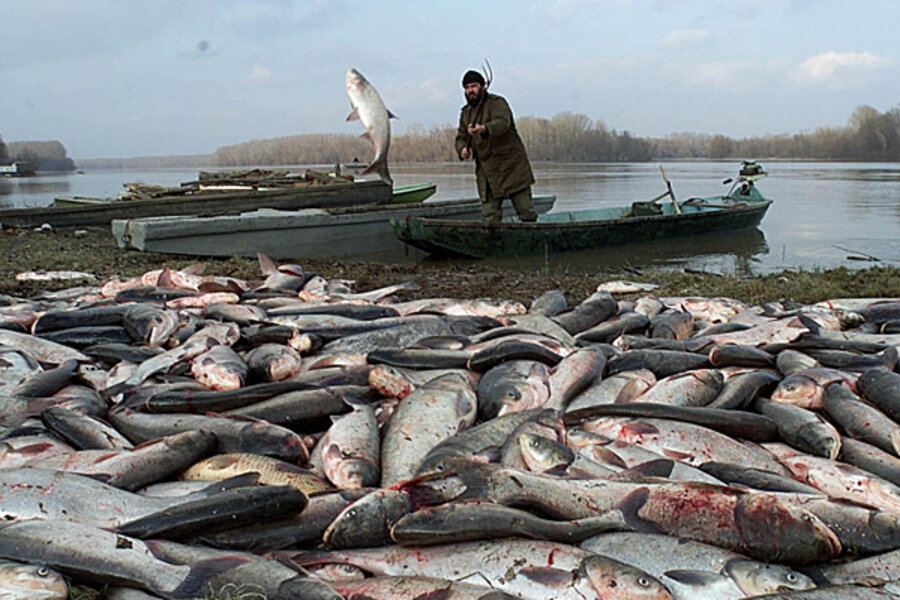Hungary's toxic sludge reminiscent of 2000 Romania disaster – but much worse
Loading...
The largest, most dangerous environmental disaster in Hungary's history is unfolding this week after a containment pond dam broke Monday, releasing more than 35 million cubic feet of toxic sludge. The red slurry has now seeped into the Danube River and authorities are worried about widespread damage to water supplies.
While there have been many other small spills throughout Europe, nothing of this magnitude has ever occurred on the continent.
It is difficult, however, to gauge whether the spill will be the "worst" environmental disaster for Europe, since long-term effects will be unknown for awhile, says Greenpeace Hungary Director Zsolt Szegfalvi.
RELATED: Top 10 environmental disasters worldwide
In a telephone interview from Hungary, Mr. Szegfalvi says the toxic sludge disaster is reminiscent of a spill in Baia Mare, Romania, in 2000 that released 4.6 million cubic feet of cyanide-tainted water into nearby rivers. Although the area has been deemed safe for residency, some traces of the spill still remain in the area.
But almost 10 times that much toxic sludge was released in Hungary, and much of it is still sitting on the ground in the surrounding villages.
In Romania, the tainted water was whisked away from the area relatively quickly by rivers, where it dispersed. A UN report found that much of the river life recovered relatively fast because contaminants came and went quickly.
That will not be the case in Hungary, where villages are buried under feet of sludge.
Removing the sludge, let alone beginning to rehabilitate the area, will take years, says Szegfalvi, adding that drinking water could become polluted as the toxins seep into the ground and into the water table. Agriculture will likely be impossible for many years.
Even the elements present in the sludge are still unknown – although authorities expect to find arsenic and chromium, among other things – and therefore it's difficult to predict the long-term effects, Szegfalvi says.
"It's going to be a long time before we can recover this area," Szegfalvi says. "Nearby villages have no chance to go back anytime soon."





